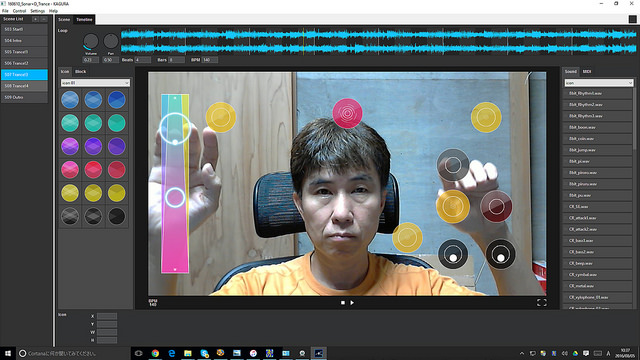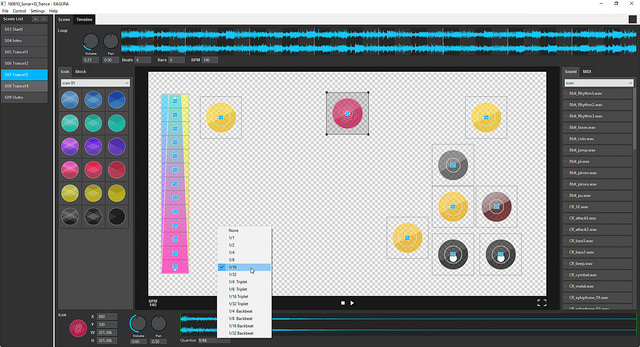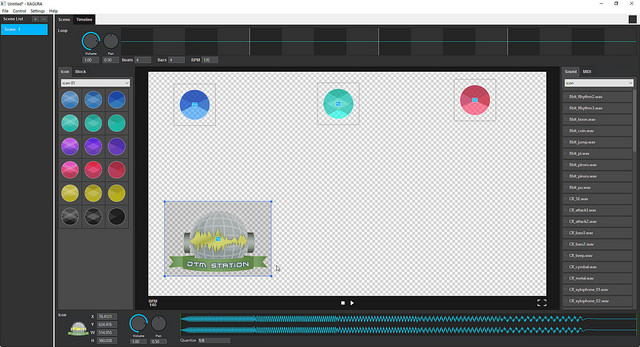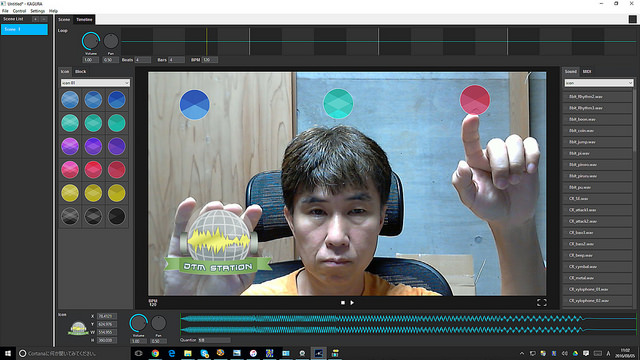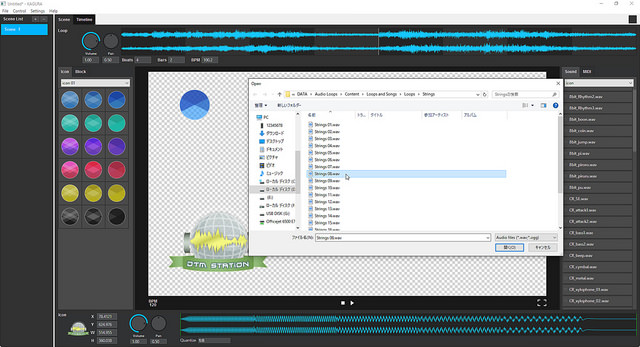Original article at DTM Station: http://www.dtmstation.com/archives/51981784.html (by Ken Fujimoto / in Japanese)
A reimagining of the musical instrument that is nothing less than a revolution in musical performance is upon us with the introduction of KAGURA. KAGURA (available for Windows or Mac) is not just a new piece of music software, but a new way of thinking about the musical instrument.
KAGURA is played in real time using your computer’s camera and monitor that features a completely new performance style with the unique benefit of being able to display what you are playing on stage. It is refreshing to say that KAGURA is very easy to get into and play, without any musical performance or music theory experience necessary, but with practice, still offers high technical musicianship for professionals. Through August 25th, KAGURA will crowdfunding on Kickstarter. Pledge prices start from $30, so I highly recommend taking a look to see what it is all about.
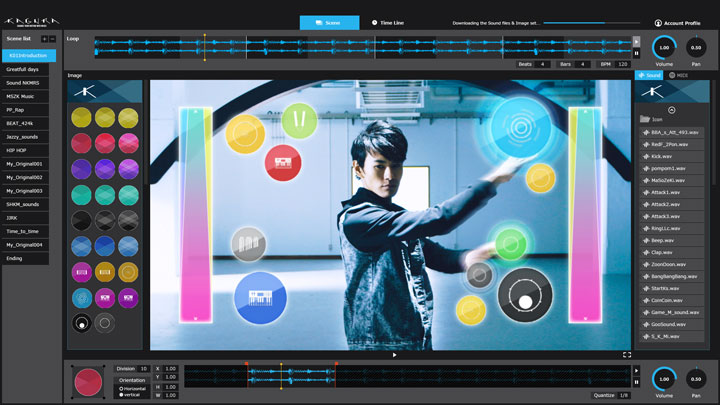
KAGURA – A completely new and inventive musical instrument
KAGURA can be best explained by watching it in action, so take a look at video here.
How about that!? Lead developer Nakamura Shunsuke of SHIKUMI DESIGN did the performance for the video, and does a good job of getting across the instrument’s feel.
I had a chance to demo KAGURA while it was in development, and I can say I had a blast playing it. When you start it up and press play, the computer’s web camera picks you up, so you can see yourself positioned among the song’s instrument sample triggers and sliders.
KAGURA is played by touching the various pads and sliders to trigger the different instrument sounds.
For those of you already familiar with digital music systems, the big questions you may have right off the bat will be with latency and detection response, and how well one could actually perform. But I can tell you it performs with aplomb in all these areas.
For example you have an icon pad with a hi-hat on it. Through the camera feed, you touch the pad for a single click, but with the BGM running (although you can turn the BGM off), if your timing isn’t just right, it will sound off beat. Here is where the quantization comes in, so you can set the note to play a 1/8 or 1/16 note or triplet for example. This lets you play the note without being off beat. So for the latency side, I do not see any problem.
The pads and sliders can be adjusted however you like, including screen positioning and size, and sounds can be freely assigned to any of them. WAV files are listed on the right side of the display, and then drag-n-drop to assign the samples to the trigger image icons.
KAGURA comes with preset songs and samples to get started with right away, but you can add your own sounds from your collection, then drop them into the tripper pads for complete personalization.
For a little test, I took the DTM Station logo and threw it up on screen. Then I added an 8bit tremolo for the sound. To put this together, I pasted the logo, drag-n-dropped in the sound, and that was it. Simple enough for anybody. Looks like WAV files and Ogg Vorbis are compatible.
In our test above, I assigned a kick, a snare and a hi-hat to the three pads on the top of the screen, and already I had a playable piece. I didn’t have a back track yet, so pulled up some ACIDized files to put on the Loop function.
It performed just as I had hoped! KAGURA read the BPM, the beat count and measure, showing them all on screen. This I can use. So now I had the loop running as my BGM, and the pads set up on screen ready to go when I start to move.
I just plugged in a short ACIDized files this time, but the fun starts when you put in your own track to make a full-length song. It wasn’t like playing a piano or guitar, but with the back track there, you can get a good percussion jam going which would be perfect for up on stage.
Drums and percussion are the easiest to get started with, but with the aforementioned sliders, you can move up and down on them to produce phrases for a melodic sound. There is a lot of freedom here, and seems only limited by how far you want to take it.
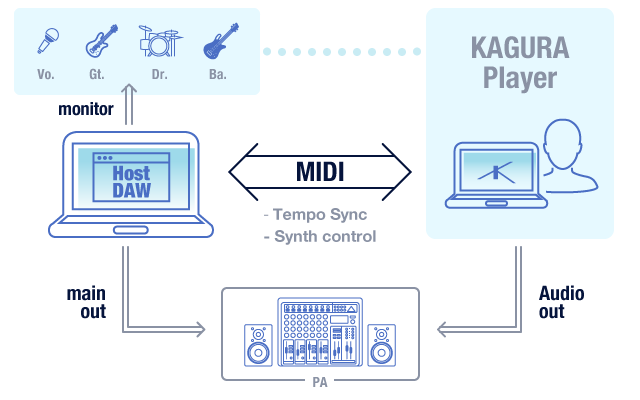
KAGURA is compatible with a suite of MIDI functions
If we stop here, we could sum up KAGURA as a body motion activated, sample triggering system that is enabled through a webcam. But the bigger point here is KAGURA’s amazing potential to extend beyond all of that.
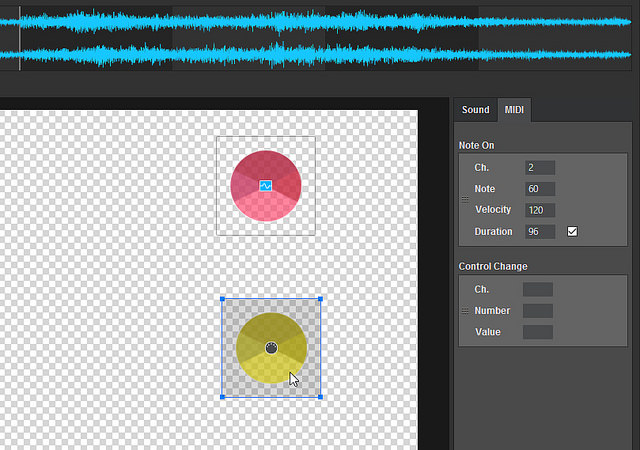
Clicking the MIDI button on the right lets you assign MIDI NOTEs and MIDI CCs
One way KAGURA does this is with its MIDI tuning options. MIDI Notes can be adjusted to tune your sound just right with the channel, note number, velocity and duration parameters. Through you can play external samples such as those running on another PC. If you are using tools like LoopMIDI, you can play sound samples from different software running on your system.
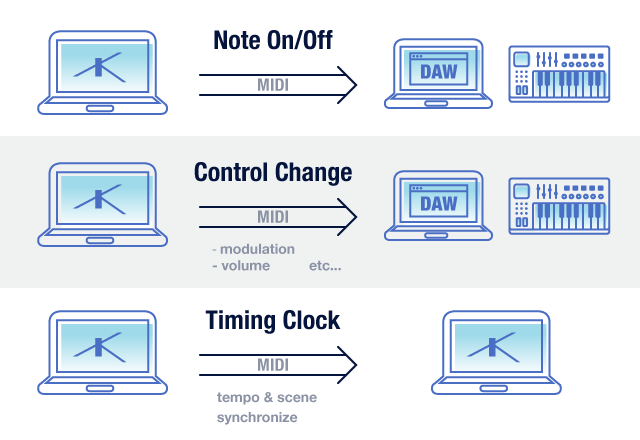
Control NOTE on/off, MIDI CCs and MIDI Clock through KAGURA
What’s more, the MIDI Control Change can be used to control external devices.
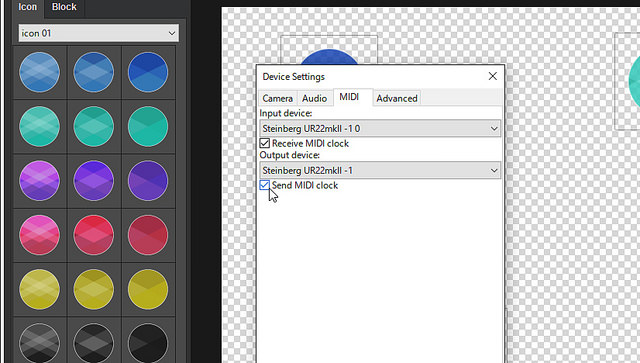
Checking the MIDI clock box synchronizes the clock signal through the MIDI
That means you have a synchronization function through your MIDI you can use in the studio. KAGURA becomes the master for the MIDI clock to sync external devices using a MIDI device. If needed, multiple hook-ups are allowed to sync loops played on KAGURA with AIRA or Volca modules.
And if you are running a DAW like Ableton Live on a separate machine, you can use a MIDI cable to sync it with KAGURA. The options here are endless.

Plus, if you have an Intel RealSense3D camera on board, you can use gestures to control objects rather than just touching to trigger them. An up or down hand motion can change the tempo, or giving a palm out gesture will let you make a sample to turn into a trigger pad. It gives the impression KAGURA can do pretty much anything.
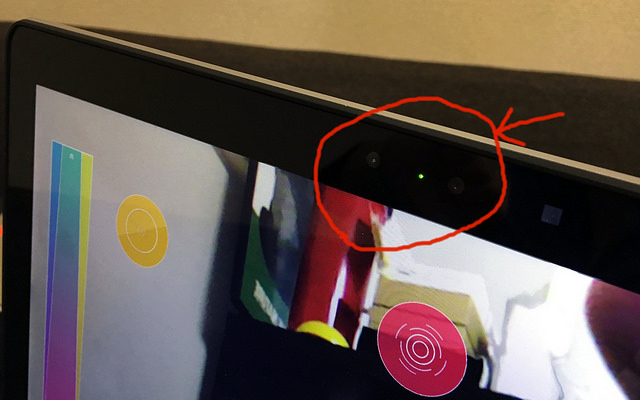
RealSense3D installed PC. If you look closely, you can see two internal cameras
As a side note, you can get the 3D camera from Intel or licensor at about $100.
KAGURA, while still in development, took home the Grand Prize at the Sonar+D competition this summer, and looks to be gaining world-wide attention. What do you think from what we’ve shown here?
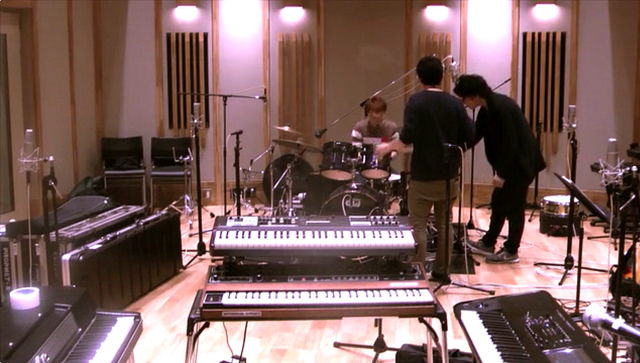
At the recording session for the KAGURA sound samples collection
Now for the price list. The KAGURA Minimal Pack without image icons and sound samples goes for $30. The Starter Samples Pack with an introductory selection of image and sound samples is $60. And the Premium Samples Pack with 20 different sound samples recorded especially for KAGURA is $120. Also available is a PC that comes with a RealSense3D camera installed.
At the current development schedule, KAGURA will be coming out February next year. If you want it, get it now while it’s bargain time!
[Update] 2016.08.09
After the publishing of this article, I pledged for the $60 Starter Samples Pack. Can’t wait for the release!
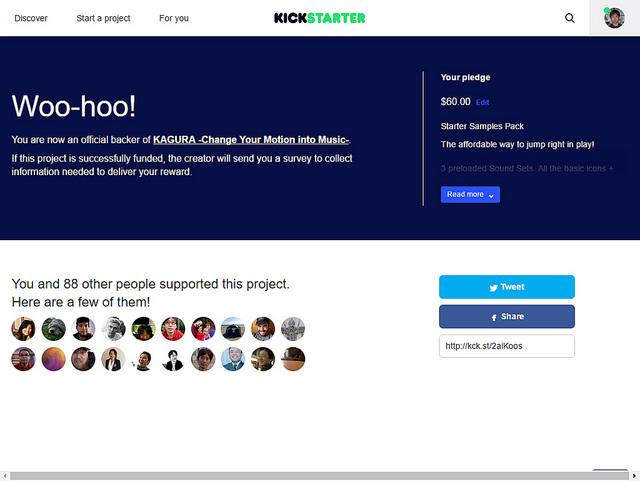
I am the 89th backer!
– LINK –

